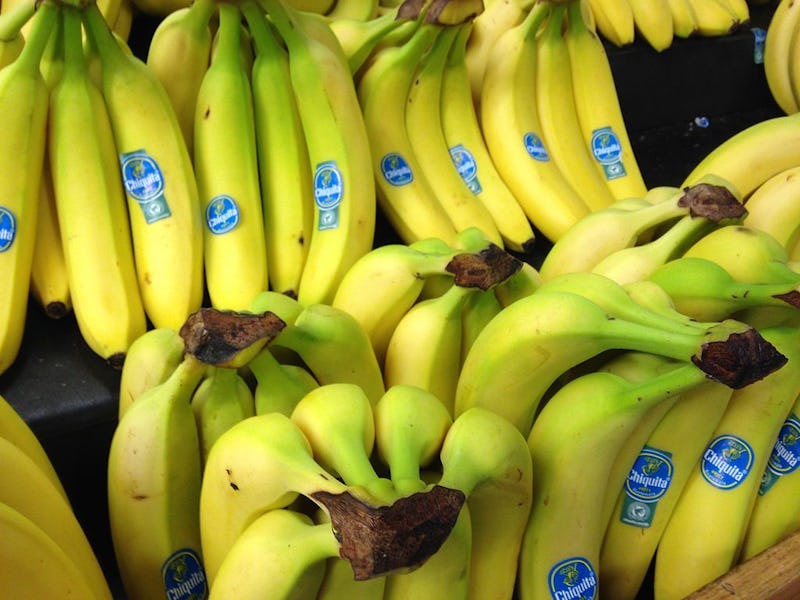An Unstoppable Fungus Disease Is Wiping Out the World's Banana Plants

Banana lore has long held that the bright yellow variety of the fruit — the world’s fourth-most valuable food product after rice, wheat, and milk — is a mere shadow of the banana our grandparents would’ve enjoyed.
The Cavendish strain that we enjoy as nature’s energy bar thrives today largely because the previous favorite banana strain, the Gros Michel, starred in the first industrial cultivation of the fruit in the 1800s. At the end of that century, a contagious, durable fungus began afflicting plantations with what came to be known as Panama disease — a fatal wasting that within a few decades wiped the Gros Michel off the map. Bananas, a monoculture, do not reproduce sexually, and are propagated agriculturally as genetic clones. The wrong bug can bring them all down.
We’ve known for a while that Cavendish, as well, would be susceptible to a similar fate. Well, it’s happening, and the consequences could be catastrophic for the $11 billion banana trade and for the many millions of people, particularly in poorer countries, that depend on the fruit for sustenance. A study out of Wageningen University in the Netherlands has found that a cousin of the Panama disease that has been percolating in Asia and the Pacific is sure to cross the Atlantic.
Tropical Race 4, likely related to the Tropical Race 1 that killed the Gros Michel, was first identified in the mid-Nineties after an outbreak in Taiwan. But the industry was slow to react, the researchers write in “Worse Comes to Worst: Bananas and Panama Disease—When Plant and Pathogen Clones Meet,” published in PLOS Pathogens in November. No one found a replacement to the Cavendish. After TR4 swept through parts of China, Australia, Indonesia, and Malaysia, it made its way to the Middle East. Quarantine has so far proved ineffective; Africa and the Western Hemisphere are likely to follow.
Quartz, which previously drew parallels between bananas’ vulnerability and the Irish potato famine, notes that, worldwide, TR4 “is able to kill more than four-fifths of those bananas poor farming communities rely on for food.”
The fungus is so durable and far-ranging that the Cavendish may be a total loss. The future of bananas depends on finding another strain that will resist the infection. Chances are that version may be runty, misshapen, weirdly colored, or less tasty than the gleaming yellow specimens you find now in the grocery. Enjoy them while you can.